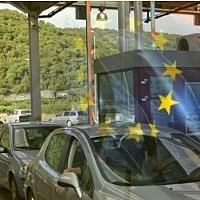(BRUSSELS) – The EU has extended controls at certain internal Schengen borders – Germany, Austria, Sweden, Denmark and Norway, where controls already take place for a further three months.
At the same time, both the EU Council and the Commission stressed that this was due to ‘exceptional circumstances’, that the measures were temporary, and that the intention remained to ‘return to Schengen’.
The situation was improving, said Slovak Interior Minister Robert Kalinak, for the EU presidency: “The prolongation will therefore be for three months only, and there will be more intensive reporting obligations compared to the previous period,” he said.
Starting from the date of the adoption, Austria, Germany, Denmark, Sweden and Norway should prolong proportionate temporary border controls for a maximum period of three months at the following internal borders:
- Austria at the Austrian-Hungarian land border and Austrian-Slovenian land border;
- Germany at the German-Austrian land border;
- Denmark in the Danish ports with ferry connections to Germany and at the Danish-German land border;
- Sweden in the Swedish harbours in the Police Region South and West and at the Öresund bridge;
- Norway in the Norwegian ports with ferry connections to Denmark, Germany and Sweden.
On 25 October the Commission found that, despite the progressive stabilisation of the situation, the conditions of its ‘Back to Schengen’ roadmap allowing for a return to a normally functioning Schengen area were not yet fully fulfilled, proposing to extend the measures, in line with the Schengen Borders Code.
It made clear that Member States opting to continue carrying out internal border controls should review week by week the necessity, frequency, location and time of controls. It said they should also adjust the intensity of the controls “to the level of the threat addressed”, and also phase them out “wherever appropriate”. Member States have an obligation to provide detailed monthly reports on the controls carried out and their necessity.


